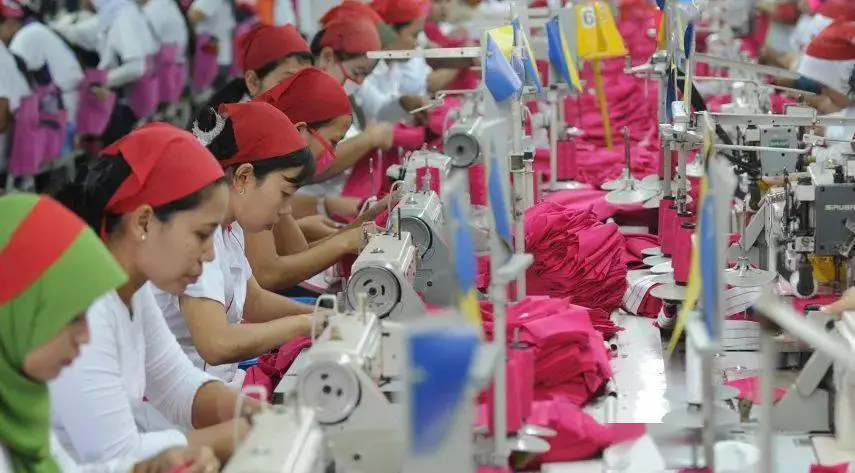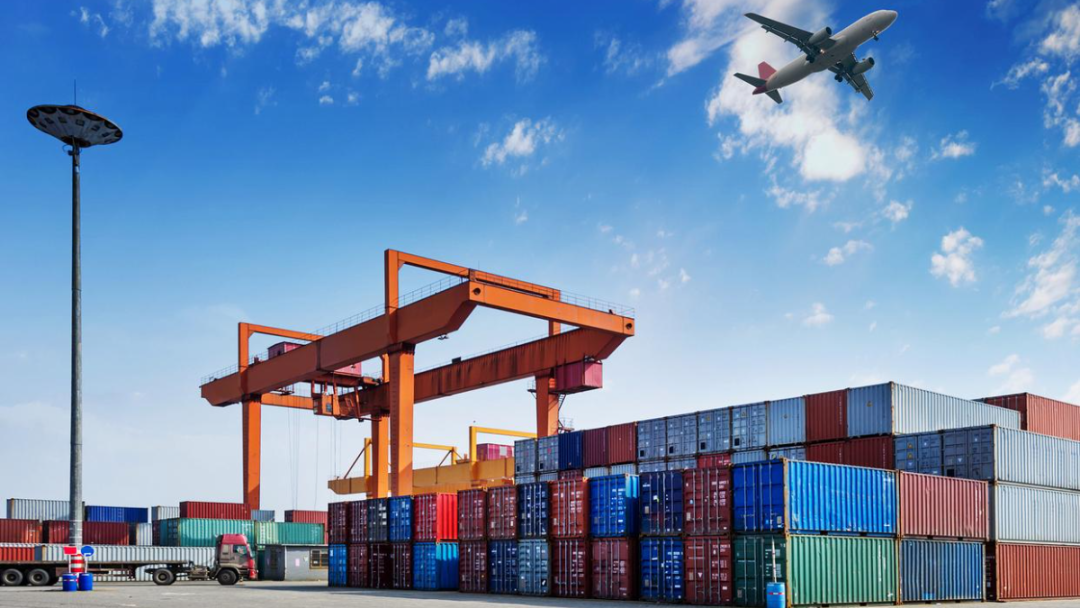
According to statistics from China Customs, from January to September, my country's total exports of clothing (including clothing accessories, the same below) amounted to 118.38 billion US dollars, a year-on-year decrease of 1.3%. From the perspective of exports in each quarter, exports increased slightly in the first quarter, with exports of 33.75 billion US dollars, a year-on-year increase of 1.2%. The second and third quarters still declined despite the small base last year, and the decline showed an expanding trend. Exports in the second quarter were 40.11 billion US dollars, a year-on-year decrease of 1%. Exports in the third quarter were 44.52 billion US dollars, a year-on-year decrease of 3.5%. Exports in September were 13.53 billion US dollars, a year-on-year decrease of 5.1%. From the perspective of the domestic market, from January to September, the total retail sales of domestic clothing, shoes and hats increased by 0.2% year-on-year, and the consumer market was generally stable. From the perspective of imports, due to the small base of clothing imports last year, clothing imports in the first three quarters of this year have rebounded. From January to September, clothing imports were 7.69 billion US dollars, a year-on-year increase of 4.8%.
Clothing export situation

Exports continued the trend of increasing volume and falling prices.
From January to September, knitted clothing exports increased, while woven clothing exports decreased. The export volume of the two major categories of clothing increased by more than 11% year-on-year, and the export prices both decreased, with the decline in the export price of woven clothing being greater. Knitted clothing exports were US$54.35 billion, up 2.5% year-on-year; the export volume was 17.46 billion pieces, up 11.5% year-on-year; the export price decreased by 8.1% year-on-year. Woven clothing exports were US$48.51 billion, down 5.3% year-on-year; the export volume was 10.3 billion pieces, up 12.2% year-on-year; the export price decreased by 15.5% year-on-year. Clothing accessories exports were US$11.71 billion, down 3.4% year-on-year.
Knitted T-shirt exports increased significantly.
From January to September, shirt and underwear exports maintained rapid growth, among which knitted T-shirt exports increased significantly by 26.3%. Shirts, underwear/pajamas, bras, and baby clothes exports increased by 8.7%, 7.8%, 6.4%, and 4%, respectively. The export of outerwear clothing showed a large decline. Exports of coats/winter clothes and suits/casual suits fell by 19.2% and 13.4% respectively.
Exports to the United States and Europe rebounded, while exports to Central Asia slowed down.
From January to September, my country's exports to Western developed economies (the United States, Canada, Europe, the United Kingdom, Japan, Australia and New Zealand) amounted to US$66.53 billion, a year-on-year increase of 0.5%. Exports to the United States amounted to US$26.82 billion, a year-on-year increase of 4.7%; accounting for 22.7%, an increase of 1.4 percentage points. Exports to the European Union amounted to US$20.88 billion, a year-on-year increase of 1%; accounting for 17.6%, an increase of 0.4 percentage points. Exports to Japan amounted to US$8.78 billion, a year-on-year decrease of 10.1%; accounting for 7.4%, a decrease of 0.7 percentage points. Exports to the United Kingdom, Singapore and Canada were US$3.95 billion, US$2.05 billion and US$2.07 billion, respectively, an increase of 6.5%, 7.2% and 6.8% respectively. Exports to South Korea and Australia were US$4.63 billion and US$3.58 billion, respectively, a decrease of 5% and 10.4% respectively. From January to September, my country's exports to the countries participating in the Belt and Road Initiative amounted to US$49.68 billion, down 5% year-on-year, accounting for 42%, a decrease of 1.6 percentage points. Exports to ASEAN amounted to US$10.99 billion, down 1.5% year-on-year, accounting for 9.3%, the same as last year. Among them, exports to Malaysia, Vietnam and Myanmar decreased by 4.5%, 20.5% and 21.8% respectively. Exports to Singapore, Thailand, Indonesia and Cambodia increased by 7.2%, 49.3%, 9.2% and 30.7% respectively. The growth rate of exports to the five Central Asian countries slowed down significantly, with exports of US$9.74 billion, up 1.1% year-on-year (exports to Central Asia increased by 22.5% in the first half of this year, and exports decreased by 24.2% in the third quarter). Exports to Russia amounted to US$2.89 billion, down 11.1% year-on-year. Exports to Latin America amounted to US$7.18 billion, up 6.3% year-on-year (exports to Mexico and Brazil increased by 18.6% and 11.5% respectively). Exports to Africa amounted to US$5.4 billion, down 17.4% year-on-year. Exports to the six GCC countries were US$3.41 billion, down 16.1% year-on-year.
The export share of eastern provinces and cities rebounded.
From January to September, Zhejiang, Jiangsu and Shanghai exported US$27.97 billion, US$15.51 billion and US$6.6 billion, up 4.9%, 1.5% and 0.5% year-on-year respectively. Guangdong, Shandong and Fujian exported US$17.1 billion, US$13.32 billion and US$10.23 billion, down 6.3%, 0.8% and 1.9% year-on-year respectively. The "five provinces and one city" in the east accounted for 76.7% of the national exports, up 1.2 percentage points year-on-year. The total exports of the 20 provinces and cities in the central and western regions fell by 6.1% year-on-year, accounting for 19.4% of the total exports, down 1 percentage point year-on-year. Among them, Xinjiang exported US$10.22 billion, up 8.5% year-on-year, and the growth rate was significantly slower than before.
Clothing imports

Imports of clothing from major countries increased
From January to September, and China's imports of clothing from major countries in the world increased. The main sources of China's imported clothing are Italy and Vietnam, and the combined share of the two countries accounts for 44.9% of China's total clothing imports. Imports from Italy amounted to US$2.05 billion, up 2.2% year-on-year, and imports from Vietnam amounted to US$1.41 billion, up 17.7% year-on-year. In addition, imports from neighboring Asian countries such as Bangladesh, Cambodia, India, and Myanmar all showed double-digit growth. Imports of woven clothing grew rapidly, with imports of woven clothing reaching US$4.01 billion, up 11.4% year-on-year, a 0.6% year-on-year decrease in quantity, and a 1.4% year-on-year decrease in price. Imports of knitted clothing amounted to US$2.79 billion, down 2% year-on-year, a 7.7% year-on-year increase in quantity, and a 3.4% year-on-year increase in price.
Imports in Shanghai and Guangdong grew steadily
Shanghai is home to many foreign brand agents and import traders, and is the most important province and city for importing clothing in my country. From January to September, Shanghai imported US$5.4 billion in clothing, up 5.7% year-on-year, accounting for 70.3% of the country's imports. In addition, Guangdong and Jiangsu are also major provinces and cities for importing clothing, with Guangdong importing US$750 million, up 4.8% year-on-year; and Jiangsu importing US$500 million, down 2.3% year-on-year.
International market situation
The decline in imports in developed countries slowed down
From January to August, clothing imports in developed economies maintained negative growth, but the decline slowed down. The United States imported $59.57 billion in clothing, down 2.7% year-on-year. The European Union imported $62.41 billion, down 4% year-on-year. Japan imported $15.85 billion, down 4.9% year-on-year. The United Kingdom imported $13.01 billion, down 9% year-on-year. Australia imported $5.761 billion, down 0.1% year-on-year. Canada imported $7.74 billion, down 4.7% year-on-year. South Korea imported $8.31 billion, down 0.6% year-on-year.
Judging from the import situation in August, market demand in some developed countries has recovered, and imports have increased year-on-year. Imports from the United States, the European Union, and Canada increased by 1%, 6.1%, and 2.6% respectively. Japan's clothing imports continued to decline, down 8.9% year-on-year.
Vietnam and Cambodia's exports grew rapidly
From January to August, Vietnam exported $23.12 billion in clothing, up 8.8% year-on-year, and India exported $11.34 billion in clothing, up 4.3% year-on-year. Turkey exported 11.95 billion US dollars of clothing, a year-on-year decrease of 6.5%; Indonesia exported 5.84 billion US dollars of clothing, a year-on-year decrease of 0.1%. From January to July, Cambodia exported 5.38 billion US dollars of clothing, a year-on-year increase of 18.7%
Trend Outlook
In the first three quarters of this year, my country's clothing exports showed the following prominent characteristics:
First, this year's exports started steadily with a slight increase, but the downward pressure was relatively large in the later period.
Second, the export market was diversified, and the export performance to different regions was quite different. In the developed countries, exports to the United States and Europe increased, but exports to Japan decreased; after the rapid growth of exports to emerging markets, the growth rate slowed down due to factors such as limited market space and high base.
Third, with the changes in the global economic situation, the purchasing power and consumption habits of overseas consumers are also changing, which directly affects the "increase in volume and decrease in price" characteristics of China's clothing exports. On the one hand, it shows that the demand in the international market has rebounded, and on the other hand, consumers are more inclined to purchase low-priced goods, and the proportion of low-priced cross-border e-commerce exports has increased significantly.
Fourth, the recent sharp fluctuations in the RMB exchange rate have also had an impact on China's clothing exports. The appreciation of the RMB has weakened the price competitiveness of China's clothing exports, thereby affecting the growth of export volume.
While facing many challenges, China's clothing exports have also shown resilience and potential. In the future, the clothing export industry needs to continue to strengthen innovation, accelerate the layout of the global market, and continuously improve product added value to cope with increasingly fierce international competition. At the same time, it is also necessary to pay close attention to changes in international political economy, exchange rates and other factors, and adjust strategies in a timely manner to ensure stable export growth.
Source: Textile Friends Network, Cotton Textile Technology New Media
 QR CODE
QR CODE